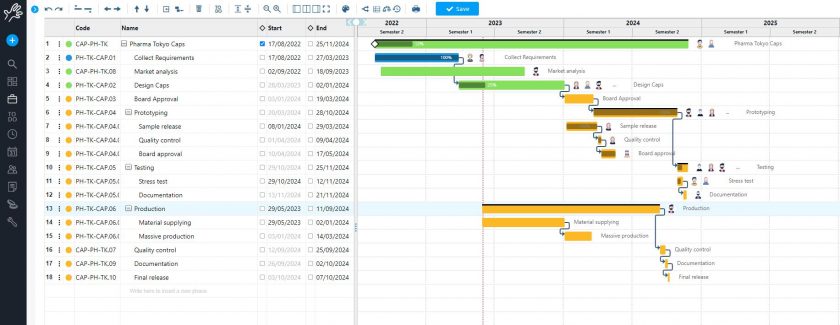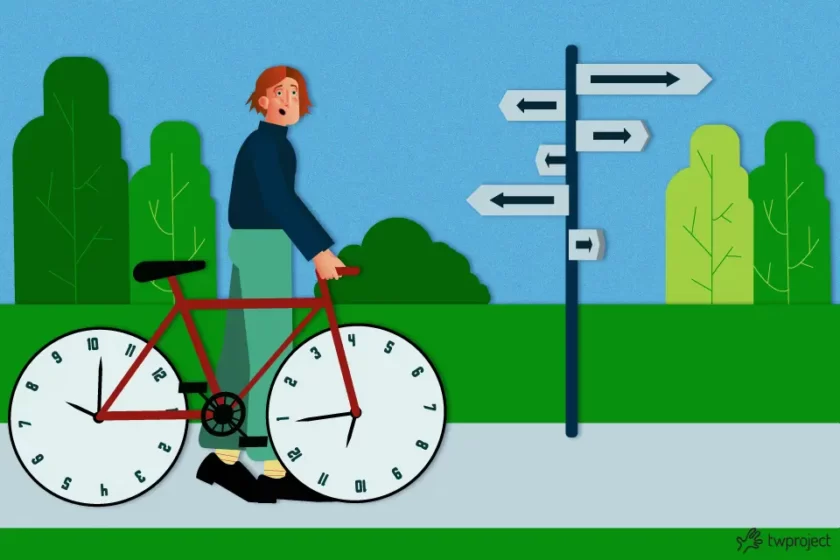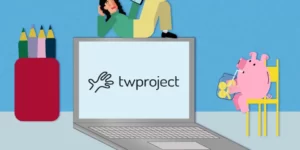Decision-making processes are a pivotal aspect of any organization, directly impacting its efficiency, competitiveness, and ability to adapt to change. Optimizing these processes means making decisions more quickly, with increased awareness, and, most importantly, positively impacting business performance.
Let’s take a look at what this is about in this article.
CONTENT
- What is a decision-making process?
- Factors that can influence decision-making processes
- 1. Data quality and availability
- 2. Time available
- 3. Emotional and cultural factors
- 4. Conflicts of interest or misalignment
- 5. Cognitive biases
- 5 Strategies for optimizing decision-making processes
- 1. Centralize information
- 2. Define decision-making roles and responsibilities
- 3. Use visualization and comparison tools
- 4. Get teams involved at key moments
- 5. Monitor results to learn from past decisions
- Minimizing errors: training and awareness
What is a decision-making process?
The decision-making process is the process by which an individual or group chooses a course of action from among several possible alternatives. This process underpins all strategic and operational activities in the business context, from human resource management to project planning and budget allocation.
An effective decision-making process typically follows a structured sequence that can be summarized in these main steps:
- Problem or objective identification
It all starts with identifying a situation that requires intervention, such as a decline in project performance or a missed deadline.
2. Information collection and analysis
This is when data and insights are gathered to understand the context. Tools such as Twproject are essential as they provide an up-to-date and detailed picture of tasks, resources, and company KPIs.
3. Alternatives generation
Potential courses of action are defined. These may be tried and tested solutions or innovative approaches.
4. Alternatives assessment
All options are examined regarding costs, benefits, risks, and feasibility. Data collected through Twproject, such as workloads, remaining budgets, and future milestones, helps you make objective choices.
5. Choosing the best alternative
It’s time to decide based on effectiveness, speed, impact, and sustainability.
6. Implementation and monitoring
After the decision is made, the action is implemented and monitored. Once again, Twproject supports your team in tracking execution, measuring results, and correcting deviations.
In dynamic environments such as businesses, a decision can have significant cascading consequences. As such, it is essential that the process follows transparent logic and is supported by reliable data.
Optimizing this process means shortening schedules, limiting errors, and increasing consistency between objectives and actions.
Factors that can influence decision-making processes
In a business setting, decision-making processes never take place in a neutral space: they are influenced by numerous internal and external factors that can significantly impact the quality and timeliness of choices.
Here are the main factors to keep under control to make every decision-making process effective:
1. Data quality and availability
One of the biggest obstacles to informed decision-making is the lack of up-to-date, structured, and reliable information. Making decisions based on incomplete or outdated data can be risky, especially in complex and dynamic environments.
For example, a project manager gauges their team’s workload to plan a new task. If the available data does not reflect the availability of resources, this decision can lead to overloads, delays, and dissatisfaction.
Twproject offers real-time dashboards, task visibility, interactive Gantt charts, and customized reports, which support decision-making with accurate and constantly updated data.

2. Time available
Business decisions do not always enjoy the luxury of extensive consideration. In some cases, time pressure leads to rushed or improperly thought-out choices.
For example, a crisis in your team requires the urgent replacement of a resource. Without rapid planning tools, the response will likely be based on gut feeling or habit rather than structured logic.
With Twproject, you can see who is available, what skills they have, and when they are available with just a few clicks, making the decision immediate but also reasoned.
3. Emotional and cultural factors
Emotions, social pressures, power dynamics, and organizational culture can impact the clarity of a decision. The drive to conform or avoid internal conflict can push people toward suboptimal choices.
For example, a team leader may choose not to report a delay to avoid “making their team look bad.” Therefore, management makes a decision based on a distorted perception of the situation.
4. Conflicts of interest or misalignment
When different stakeholders do not share objectives, priorities, or evaluation criteria, the decision-making process becomes sluggish, fragmented, and often ineffective.
For example, the IT department wants to cut maintenance costs, while the sales department aims to maximize system performance. The lack of a shared framework slows down the process.
Twproject provides an integrated view of projects and objectives, improving department alignment and facilitating shared decision-making.
5. Cognitive biases
Cognitive biases are mental shortcuts that, albeit applicable in some situations for making quick decisions, can negatively impact decision-making processes, leading to distorted assessments and incorrect choices. They often operate subconsciously, making them difficult to recognize and isolate.
Here are some of the most common:
- Confirmation bias
We tend to seek out, interpret, and remember only information substantiating our beliefs, ignoring or downplaying opposing data. This behavior can reinforce preexisting biases and hinder objective analysis.
- Anchor effect
This is when the first piece of information received heavily influences subsequent decisions. Even if that information is irrelevant, it acts as an “anchor” and distorts the evaluation of alternatives.
- Overconfidence
It involves overestimating one’s knowledge, skills, or predictive abilities. This leads to underestimating risks, simplifying complex problems, and ignoring red flags. - Loss aversion
Humans tend to fear losses more than potential gains. This often results in avoiding risky decisions, even when the expected benefits outweigh the costs.
Halo effect
A single positive or negative trait of a person, project, or alternative influences the overall judgment, even without complete information.
- Groupthink
In group settings, the desire for consensus can be so strong that participants may align themselves with the majority, avoiding expressing opposing opinions or constructive criticism.
5 Strategies for optimizing decision-making processes
Applying certain cross-cutting strategies is crucial to making business decision-making processes swifter, more accurate, and more consistent with strategic objectives. Combining method and technology is the key to success.
Here are the main strategies that help structure an effective decision-making process, minimizing uncertainty:
1. Centralize information
A unique place where project data is collected prevents information from getting lost or distorted. Decisions made without a full picture can be risky and out of step with the operational reality.
With Twproject, you have a centralized hub for all relevant information: tasks, timelines, budgets, workloads, and project progress. This allows you to make faster and more informed decisions.
2. Define decision-making roles and responsibilities
Knowing “who decides what” is key to preventing bottlenecks and overlapping responsibilities. When processes are equivocal, decisions get delayed or taken without justification.
Twproject allows you to clearly assign roles, permissions, and responsibilities, helping to define each stakeholder’s decision-making boundaries.
3. Use visualization and comparison tools
Visualizing alternative scenarios, timelines, and workflows makes comparing options much more immediate. A clear picture of the project helps you make more objective assessments.
Twproject Gantt views, interactive workloads, and comparative reports allow you to quickly assess the consequences of a decision after analyzing the variables involved.
4. Get teams involved at key moments
A common mistake is making top-down decisions without involving those who work on projects daily. Including the right people can bring new perspectives, reduce risks, and increase commitment.
Twproject facilitates people’s involvement through collaboration tools, file sharing, targeted notifications, and comments on activities. Decisions become more participatory and informed.
5. Monitor results to learn from past decisions
Any business decision has consequences. Evaluating its impact retroactively allows you to refine your decision-making process over time.
With Twproject‘s historical reports and KPIs, you can compare forecasts with actual results and build a knowledge base that will be useful for future decisions.
Minimizing errors: training and awareness
Structuring the process is not enough: you must foster a culture of informed decision-making within your company. The most critical errors do not always stem from a lack of information, but from misinterpretation, psychological conditioning, or inexperience.
Here’s what you need to work on to reduce the margin of error:
1. Training on cognitive biases
Cognitive biases are mental shortcuts that shape how we evaluate options. Even the most experienced managers can be unaware victims of these errors.
Example: A project leader tends only to confirm information that supports their opinion (confirmation bias), ignoring red flags.
Training on these mechanisms helps recognize and neutralize them, improving the quality of critical thinking.
2. Promote a culture of feedback and post-decision analysis
Creating structured moments to review what worked and what didn’t after making a decision allows you to develop valuable skills. Companies that learn from their mistakes make better decisions over time.
With Twproject, you can document decisions, strategic choices, and motivations within projects, making everything traceable and accessible in the future.
3. Developing soft skills in team leaders
Listening skills, equivocation management, effective communication, and situational leadership are all key skills for improving decision-making in complex contexts. Technology can provide support, but the person makes the decisions.
Twproject works synergistically with human assets, providing tools that amplify the effectiveness of leaders without replacing them.
Optimizing decision-making processes means adopting the right tools and developing a mature corporate culture, where decisions are not just “choices to be made” but rather opportunities to learn, grow, and innovate.



